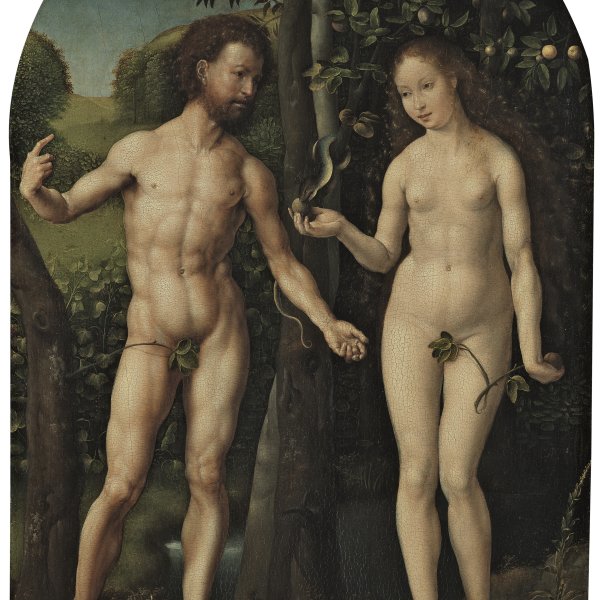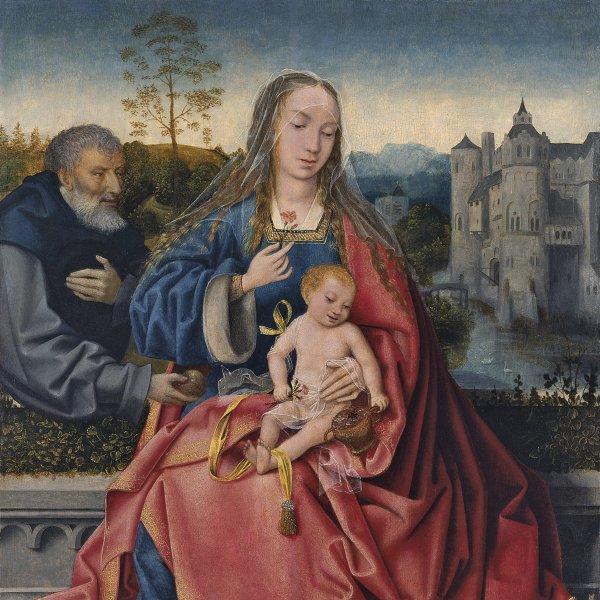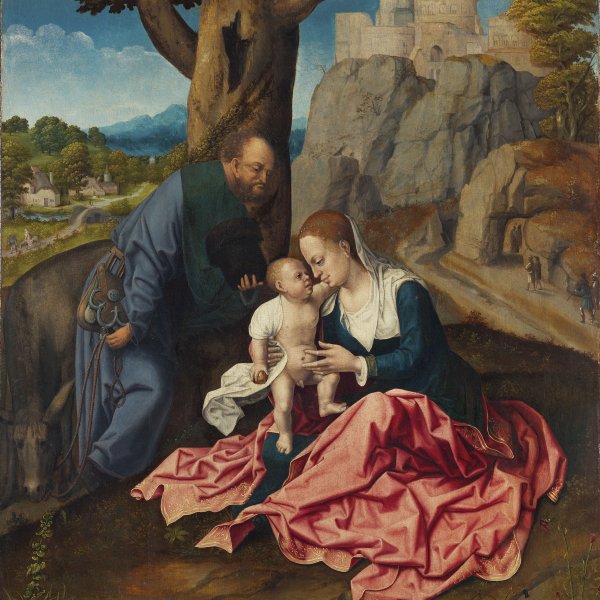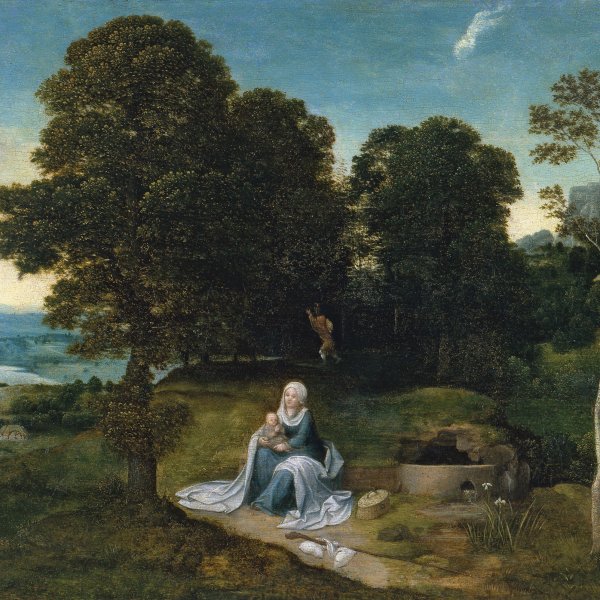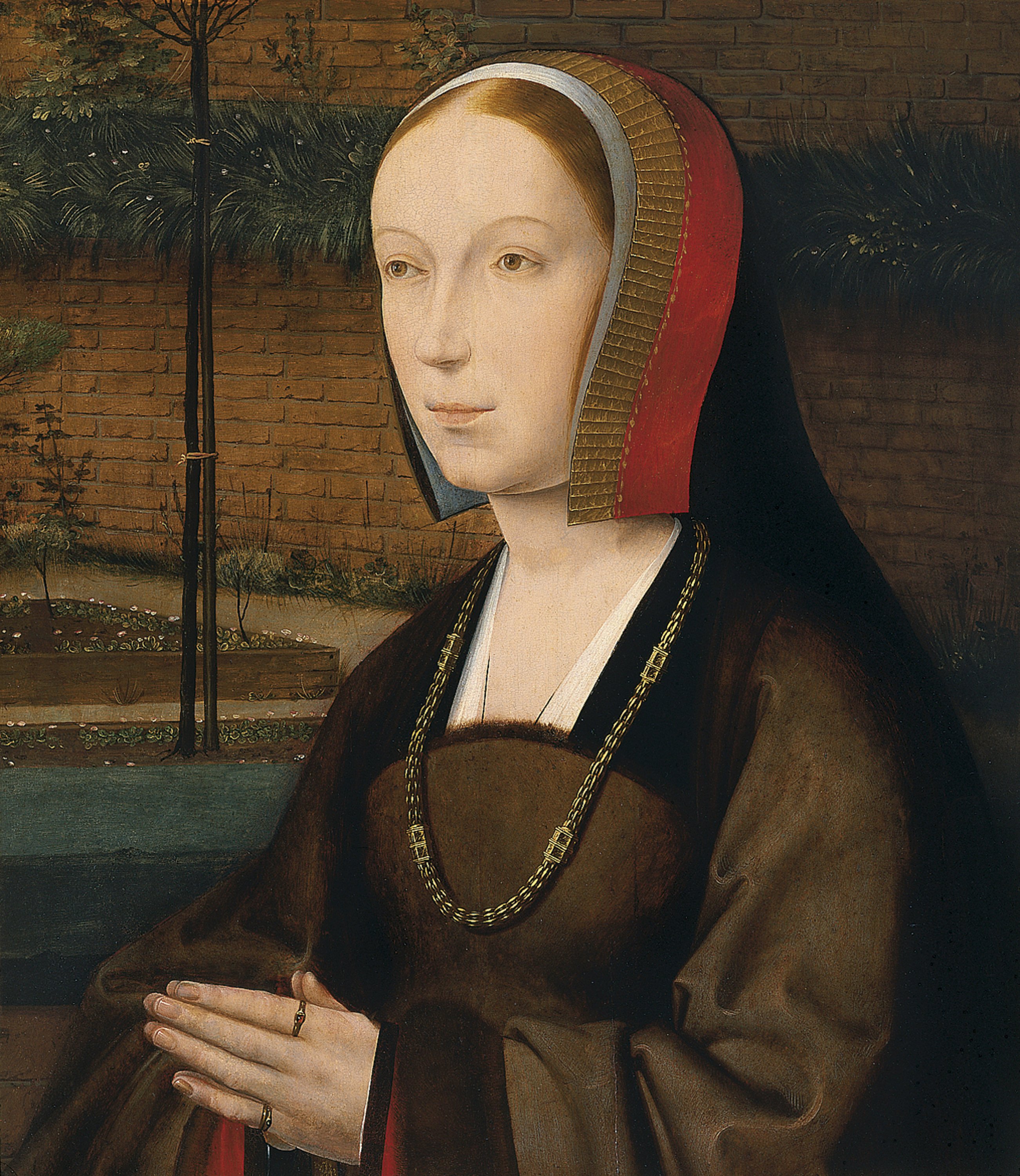Portrait of a Female Donor
Jan Provost was a renowned 16th-century painter who primarily worked in the city of Bruges. His style is considered to represent the transition from late Gothic to the Renaissance and he influenced artists of the importance of Dürer, whom he met during the latter’s trip to the Low Countries. This female portrait represents a donor figure set against the background of a garden. It is filled with a wealth of details painted with meticulous care in a manner derived from the Flemish Primitives and from French miniature painting. Grete Ring considered that the portrait may have formed part of a triptych and related it to a male portrait in the John G. Johnson Collection in the Philadelphia Museum of Art, with which it would have formed the two lateral wings. It has been suggested that the central panel could have depicted a Virgin and Child or an Annunciation.
NR
Jan Provost may have begun his artistic training with his father in Mons and completed it in Valenciennes in the workshop of Simon Marmion, whose widow he married. In 1493 he is registered in the painters’ guild in Antwerp while the following year he was in Bruges. In the latter city he received both ecclesiastical and secular commissions and worked on the decorations for the celebration of Charles V’s entry into the city in 1520. Provost played an important role in Dürer’s trip to the Low Countries, receiving the artist in Antwerp and accompanying him on his trip from Antwerp to Bruges and during his time in the latter city. On occasions, Provost’s religious paintings use a complex iconography that is difficult to interpret and which has been related to the humanist circles with which he may have had connections. Within his oeuvre only two works are documented, both dating from the end of his career: The Glorification of the Virgin (Hermitage, St. Petersburg), and The Last Judgement (Groeningemuseum, Bruges). Together with Quinten Massys, Provost is considered one of the most important artists of his day and a figure who introduced Italian trends into Netherlandish art.
The history of this fragment, which originally formed part of a larger composition, was published by Grete Ring and Carlo Ragghianti. Ring attributed the panel to Provost and associated it with a male portrait in the John G. Johnson collection in the Philadelphia Museum of Art, noting that they could have been part of the lateral wings of a triptych whose centre might have been a Virgin and Child. Ragghianti suggested that the central panel of this hypothetical altarpiece was an Annunciation in the church of San Columbano in Genoa. He also suggested that the panels of Saint Peter and Saint Elizabeth of Hungary in the Palazzo Bianco in Genoa would also have been part of the lateral wings. These suggestions have been the subject of debate, particularly the idea of The Annunciation from San Columbano, a proposal rejected by Colin Eisler, among others.
This female donor, who would originally have been depicted kneeling and who contemplates the religious scene in the central panel, conforms to the traditional presentation of the donor figure. She would have been presented to the central group by a female saint acting as intercessor between the human and the sacred realms. In the present case that saint would have been Elizabeth of Hungary, possibly the patron saint of this donor figure. With its fine draughtsmanship and delicate modelling, the present panel has a background of a carefully painted garden that terminates in a brick wall. The delicacy of the execution is evident in the plants and flowers in their tidy beds with wooden borders. The detailed setting is filled with a wealth of incidental elements such as the supporting pole, neatly tied to the trunk of the young tree on the left. The quality of the brushstroke, applied in soft glazes, is evident in the woman’s hands, whose nails with their reflections reveal a careful study of light.
Mar Borobia





